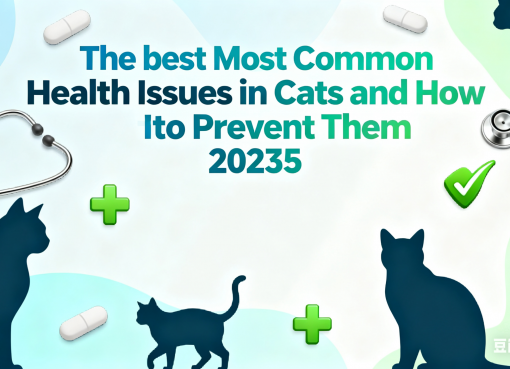The Rise of Virtual Vet Appointments & Telemedicine in 2025: Transforming Pet Care

Table of Contents
- Introduction: How Virtual Vet Appointments and Telemedicine Are Changing Pet Care
- What Are Virtual Vet Appointments and Telemedicine?
- Top Benefits of Virtual Vet Appointments (2025 Insights)
- Tech Drivers Fueling the Growth of Virtual Vet Care
- Challenges of Virtual Vet Appointments (and How They’re Addressed)
- Regulatory Guidelines: Ensuring Quality in Virtual Vet Care
- Virtual Vet Care for Remote Areas: Bridging the Access Gap
- Conclusion: The Future of Virtual Vet Appointments Beyond 2025
Introduction: How Virtual Vet Appointments and Telemedicine Are Changing Pet Care
Over the past decade, healthcare has gone digital—and the veterinary industry is keeping pace. The rise of virtual vet appointments and telemedicine in 2025 isn’t just a trend; it’s a transformation that’s making pet care easier, more accessible, and more flexible for owners worldwide.
Gone are the days of scrambling to take time off work, load a nervous pet into the car, and wait hours at a clinic for a routine check-up. Today, pet owners can connect with licensed vets via video calls, text, or apps—all from the comfort of their homes. This shift isn’t just convenient; it’s improving how pets get care, from faster triage for sick pups to ongoing support for chronic conditions. In this guide, we’ll break down why virtual vet appointments and telemedicine are booming, their key benefits, challenges, and what the future holds for this game-changing pet care tool.

What Are Virtual Vet Appointments and Telemedicine?
At its core, virtual vet appointments and telemedicine use technology to connect pet owners with licensed veterinarians remotely—no in-person clinic visit required. The goal is to provide timely, quality care for pets while cutting down on the hassle for owners.
Common forms of virtual vet care include:
- Video conferencing: The most popular option, where vets can see the pet, observe symptoms (like limping or skin rashes), and talk through concerns in real time.
- Phone/text consultations: For quick questions (e.g., “Is my dog’s diarrhea normal?”) or follow-ups after an in-person visit.
- App-based care: Many clinics now offer dedicated apps where owners can schedule appointments, share photos/videos of their pet’s symptoms, access medical records, and even get prescriptions sent to their local pharmacy.
Not all care can be done virtually (e.g., surgery or blood tests still need in-person visits), but virtual vet appointments and telemedicine excel at routine check-ups, symptom triage, behavioral advice, and chronic condition management (like diabetes or arthritis).
Top Benefits of Virtual Vet Appointments (2025 Insights)
The growth of virtual vet appointments and telemedicine in 2025 boils down to three unbeatable benefits—convenience, cost savings, and better care continuity:
1. Unmatched Convenience
For busy owners, this is the biggest win. No more rearranging work schedules, fighting traffic, or calming a stressed pet during car rides. You can schedule a virtual appointment for 7 PM after work, or even a quick check-in on a weekend morning. A 2024 survey by the American Veterinary Medical Association (AVMA) (a DoFollow link) found that 78% of pet owners who used virtual vet care cited “time savings” as their top reason for choosing it.
2. Significant Cost Savings
Traditional vet visits add up: gas, parking, and sometimes even boarding if you need to drop off your pet. Virtual vet appointments and telemedicine slashes these costs—many clinics charge 30-50% less for virtual consultations than in-person ones. Plus, vets can often guide you on at-home care (e.g., “How to clean your cat’s ear infection”) which reduces the need for repeat visits.
3. Continuity of Care (Even During Crises)
The COVID-19 pandemic first pushed virtual vet care into the spotlight, but it’s now a staple for ongoing care. If your pet has a chronic illness, you can check in with your vet weekly via video to adjust medications—no need to wait for a monthly in-person visit. This consistency leads to better health outcomes: the AVMA reports that pets with virtual follow-ups for chronic conditions have 22% fewer emergency visits.
Tech Drivers Fueling the Growth of Virtual Vet Care
Virtual vet appointments and telemedicine wouldn’t be possible without recent tech advances—and 2025 is seeing even more innovation:
1. Smartphone and App Penetration
Nearly 90% of U.S. pet owners own a smartphone (per Petco’s 2025 Pet Tech Report), making it easy to access virtual care on the go. Apps like Vetster and Chewy Telehealth let owners book appointments in 60 seconds, share symptom videos, and get prescriptions filled—all from their phones.
2. High-Quality Video and Remote Monitoring
Gone are the days of blurry video calls. 2025’s virtual vet platforms use 4K video, so vets can zoom in on a pet’s skin rash or ear canal with clarity. Remote monitoring devices are also game-changers: activity trackers (like the Whistle GO Explore) send real-time data to vets (e.g., “Your dog’s heart rate is higher than usual”), while smart litter boxes (like the Litter-Robot 4) alert vets to changes in a cat’s bathroom habits—early signs of kidney issues.
3. AI-Powered Triage Tools
Some virtual vet apps now use AI to help owners triage symptoms before a call. For example, if you input “my dog is vomiting,” the AI might ask follow-up questions (“How many times?” “Is there blood?”) and suggest whether you need an urgent virtual visit or can wait for a routine appointment. This saves time for both owners and vets.
Challenges of Virtual Vet Appointments (and How They’re Addressed)
While virtual vet appointments and telemedicine are growing fast, they still face hurdles—but 2025 solutions are making these issues easier to overcome:
1. Limited Physical Examinations
Vets can’t feel a pet’s belly or listen to their heart via video—this was a major concern early on. Now, many clinics send “virtual exam kits” to owners: a small stethoscope that connects to a phone, a thermometer, and a magnifying glass for skin checks. Vets guide owners through using these tools during calls, making virtual exams far more thorough.
2. Scope Limitations
You can’t do surgery or X-rays virtually—but virtual vet appointments and telemedicine now excel at triage. A vet might say, “Your dog’s limp looks like a sprain—try rest and ice for 2 days, and if it doesn’t improve, come in for an X-ray.” This reduces unnecessary in-person visits while ensuring pets get urgent care when needed.
3. Concerns About Misdiagnosis
Some critics worry virtual care leads to missed issues—but regulatory guidelines (see next section) and tech have fixed this. Vets now require detailed medical histories before virtual calls, and apps let owners share photos/videos taken over 24 hours (e.g., “Here’s my cat eating—she’s been slow to finish meals”). This context helps vets make accurate diagnoses.
Regulatory Guidelines: Ensuring Quality in Virtual Vet Care
To keep virtual vet appointments and telemedicine safe, 2025 has clear rules from top veterinary bodies:
- Royal College of Veterinary Surgeons (RCVS): Requires vets to have a “veterinarian-client-patient relationship (VCPR)” before providing virtual care—meaning they must have either seen the pet in person before, or gathered enough medical history to make a sound judgment.
- AVMA Guidelines: Mandates that vets document all virtual visits as thoroughly as in-person ones, and follow up with owners within 48 hours to check on the pet’s progress.
- State-Level Rules: In the U.S., states like California and New York now require virtual vet platforms to list licensed vets upfront, so owners know they’re talking to a qualified professional.
These guidelines mean owners can trust that virtual vet appointments and telemedicine meet the same quality standards as in-person care.
Virtual Vet Care for Remote Areas: Bridging the Access Gap
One of the most impactful uses of virtual vet appointments and telemedicine in 2025 is in rural or remote areas. Many small towns have only one vet clinic (or none at all), forcing owners to drive 2+ hours for care.
Virtual care changes this: a farmer in rural Iowa can video call a specialist in Chicago to get advice on their cow’s health, or a family in Alaska can check in with a vet about their dog’s allergies—no long drives needed. The National Rural Health Association (a DoFollow link) reports that virtual vet care has increased access to specialty care in rural areas by 65% since 2023.
Conclusion: The Future of Virtual Vet Appointments Beyond 2025
The rise of virtual vet appointments and telemedicine in 2025 is just the start. Looking ahead, we’ll see even more innovation: AI tools that predict pet health issues before symptoms appear, virtual reality (VR) exams that let vets “see” a pet’s body in 3D, and integration with smart home devices (e.g., a smart feeder that alerts a vet if a pet stops eating).
But one thing won’t change: virtual care is here to complement—not replace—in-person vet visits. The best pet care will be a mix: virtual check-ins for routine issues, and in-person visits for exams, surgery, and emergencies.
For pet owners, this means easier, more affordable, and more consistent care for their furry friends. And for vets, it means reaching more pets who need help—no matter where they live.
To learn how to choose a vet who offers quality virtual care, check out our guide: How to Choose a Vet for Your Pet — it breaks down what to look for in a vet who combines in-person and virtual services.




Leave a Comment